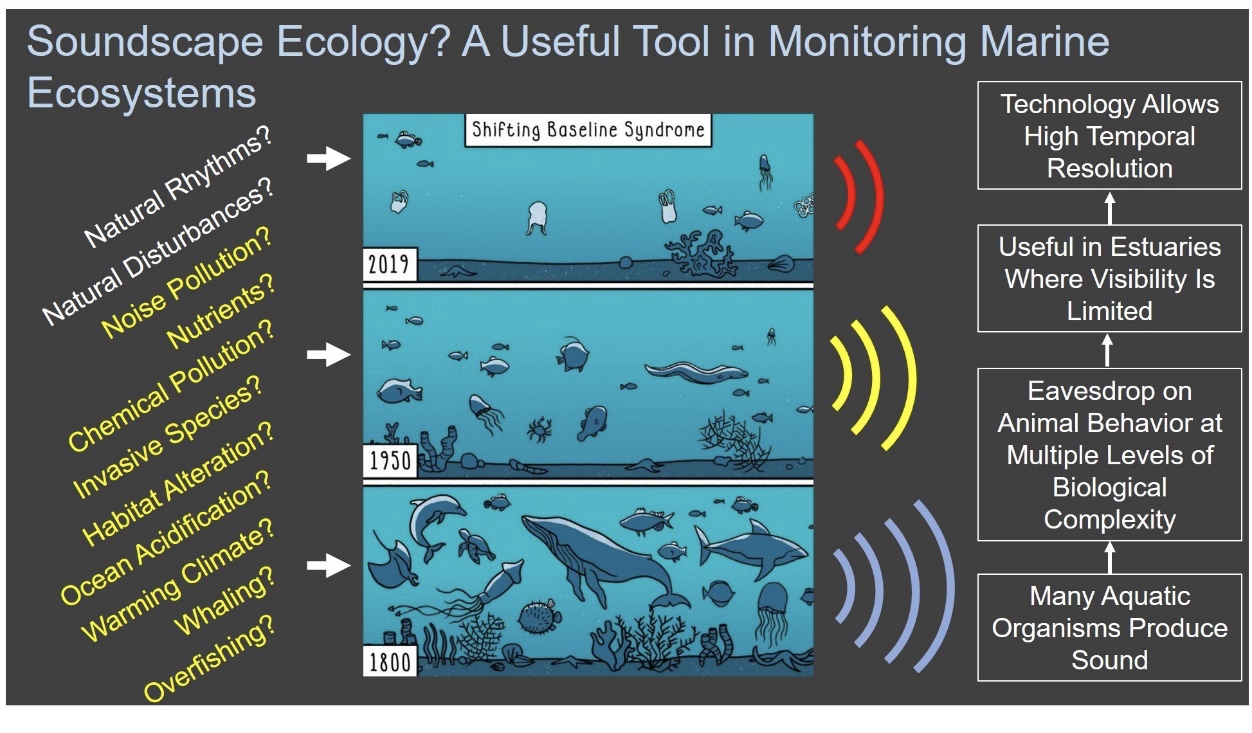Why are we listening?
Many organisms produce and use sound in estuaries to navigate, communicate, avoid predation, forage, and reproduce. By listening to the estuarine soundscape, we can gain insight into the acoustic behavior of marine organisms at a high temporal resolution over multiple levels of biological complexity. These recordings provide information on the behavior of snapping shrimp, spawning patterns of fish, foraging patterns and communication of bottlenose dolphins, and noise levels associated with human activity.
The long-term goal is to ‘eavesdrop’ on key behaviors of marine animals that can change rapidly or gradually in response to environmental changes and human impacts, thus providing a measure of resilience or shifting baselines in a globally changing environment. We can use this information to understand animal responses or resilience to various stressors including vessels, underwater construction, overfishing, chemical pollution, harmful algal blooms, climate change, and extreme weather events like hurricanes and floods.
